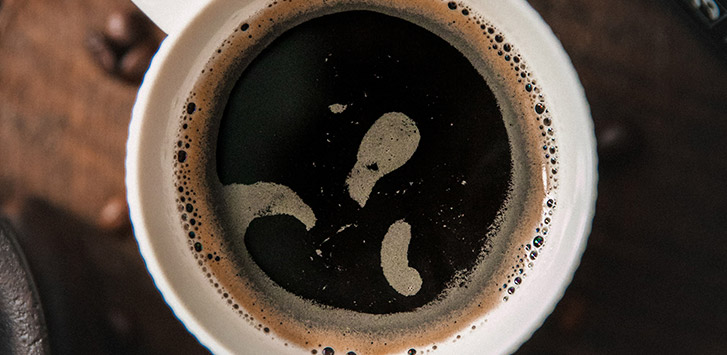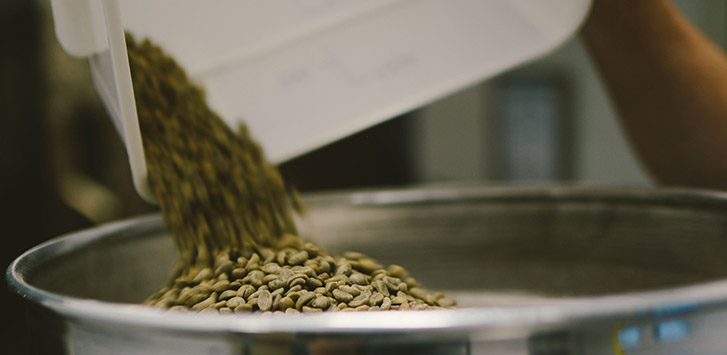Decaffeinated coffee may sound like an oxymoron, but really it can be the perfect drink. When you're looking for that coffee taste without any of the side effects, it provides the perfect solution.
But what magic goes into making coffee decaffeinated? Are there other things you lose in making the switch? Let's find out.

The History of Decaffeinated Coffee
In 1819, Johann Wolfgang von Goethe noticed an experiment from the chemist Fiedlieb Ferdinand Runge. In the experiment, the chemist showed that nightshade could be used to dilate a cat’s pupils. For some reason, this encouraged Von Goethe to ask Runge why coffee beans kept him awake at night. This was the first official study into caffeine.
In 1905, German merchant Ludwig Roselius's coffee shipment had an accident, dunking the coffee beans in the water. The water washed out the caffeine and led to the investigation that has since created decaffeinated coffee. Roselius proceeded to use benzene to wash out the caffeine, selling the product as “Sanka”.
Since then, the decaffeination process has changed dramatically. For one, it no longer uses a known carcinogen. Processes used today are also a lot better at helping the beans maintain their flavor.

How Is Decaf Coffee Made Today
Coffee is decaffeinated before it is roasted. Generally, the process involves soaking the beans to remove the caffeine.
It should be noted that after this process, around 3% of the caffeine remains. Roasting the beans after the decaffeination process allows the remaining liquid to evaporate. This leaves the beans safe to consume.
Solvent-based or Chemically Decaffeinated Coffee
Nowadays, two commonly used chemical solvents for decaffeinating coffee are methylene chloride and ethyl acetate. The Food and Drug Administration (FDA) ruled that methylene chloride is safe to use, as the miniscule traces left behind are not enough to cause any problems. Ethyl acetate is left in similarly low levels, making it safe as well.
This process begins by soaking the beans in boiling water. The water removes all of the soluble components from the beans. This includes flavor as well as caffeine, creating a sort of coffee extract.
The coffee extract is then mixed with the solvent in question, whether ethyl acetate or methylene chloride. The caffeine is removed by heating up the coffee extract mixture, causing the solvent to evaporate. The coffee beans are then soaked in the remaining coffee extract to add the flavor back.
Supercritical Carbon Dioxide
Another method is to use supercritical carbon dioxide. Carbon dioxide, under a lot of heat and pressure, enters a supercritical state.
This state enables it to separate chemical substances, including caffeine from coffee. This method was patented in 1970 and is still in use today. The residual caffeine can then be repurposed for other beverages.
Swiss Water Process and Mountain Water Process
Also in use since the 1970s, the Swiss Water Method is often flaunted by the companies that use it. It’s very similar, however, to the Mountain Water Process (both of which are trademarked).
To begin, a batch of green coffee is soaked in water. The water steals all of the soluble components of the beans. This means that the water is now full of chlorogenic acid, amino acids, and sucrose. For the Swiss Water Process, the caffeine is filtered out using carbon.
The Mountain Water Process uses a proprietary filter. The resulting product is called green coffee extract and is essential to the process.
The green water extract is introduced to new green coffee beans. The caffeine migrates back and forth in an attempt to find equilibrium. In the end, the beans are essentially caffeine free.
Which Decaffeination Process Is the Best
There’s a lot of debate in the coffee world as to which of these processes is the best. The truth is that no matter what happens, the beans are bound to lose some of their flavor.
All I can suggest is trying a few different methods and finding a decaf you like. After all, a lot more goes into flavor than roasting method. If you find beans from an area you like that are roasted how you like by a brand you like, odds are pretty good that you’ll enjoy the decaf no matter how it’s done.
Conclusion
Decaffeinated coffee is really great for when your looking for that coffee taste without those coffee jitters. Whichever method you end up preferring, you can now flaunt your niche coffee knowledge in front of all your friends.